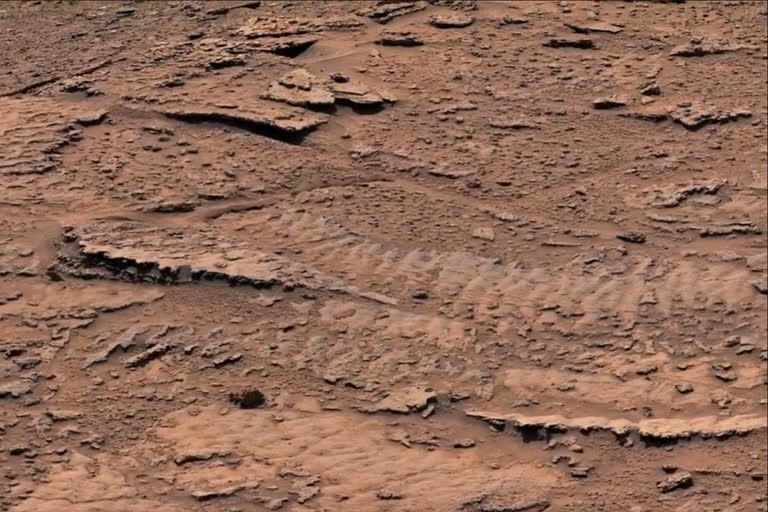Washington: NASA's Curiosity rover has discovered clearest evidence yet of ancient water ripples that formed within lakes on the Red Planet. Billions of years ago, waves on the surface of a shallow lake stirred up sediment at the lake bottom, over time creating rippled textures left in rock.
Among other discoveries made by the rover, rippled rock textures suggest lakes existed in a region of ancient Mars that scientists expected to be drier. "This is the best evidence of water and waves that we've seen in the entire mission," said Ashwin Vasavada, Curiosity's project scientist at NASA's Jet Propulsion Laboratory.
Also read: Gaganyaan mission: ISRO, Navy carry out crew module recovery trials
"We climbed through thousands of feet of lake deposits and never saw evidence like this -- and now we found it in a place we expected to be dry," Vasavada added. Since 2014, the rover has been ascending the foothills of Mount Sharp, a 3-mile (5-km) tall mountain that was once laced with lakes and streams that would have provided a rich environment for microbial life, if any ever formed on the Red Planet.
Having climbed nearly a half-mile above the mountain's base, Curiosity has found these rippled rock textures preserved in what's nicknamed the "Marker Band" - a thin layer of dark rock that stands out from the rest of Mount Sharp. Far ahead of the Marker Band, scientists can see another clue to the history of Mars' ancient water in a valley named Gediz Vallis.
"The wave ripples, debris flows, and rhythmic layers all tell us that the story of wet-to-dry on Mars wasn't simple," Vasavada said. "Mars' ancient climate had a wonderful complexity to it, much like Earth's." (IANS)
(This story has not been edited by ETV Bharat and is auto-generated from a syndicated feed.)



